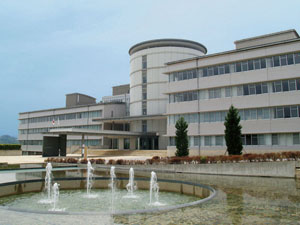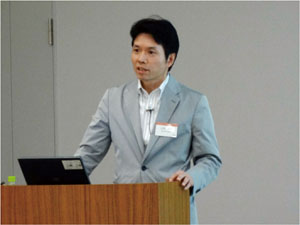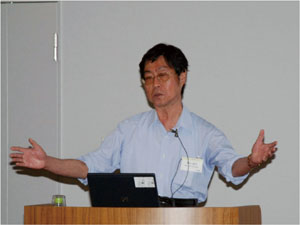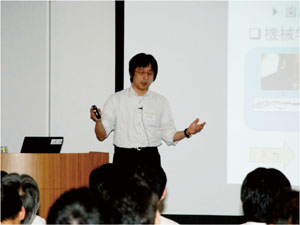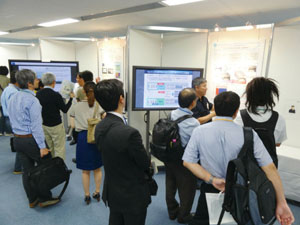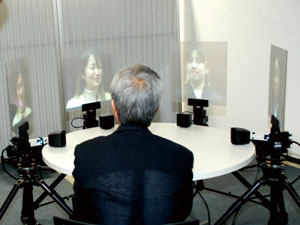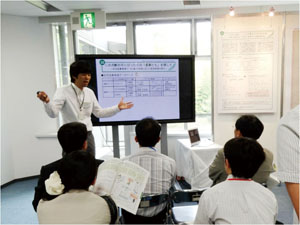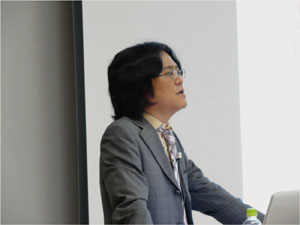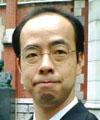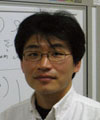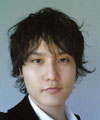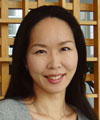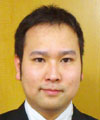 |
|||||
|
|
|||||
|
Information Vol. 10, No. 11, pp. 82–86, Nov. 2012. https://doi.org/10.53829/ntr201211in1 Report on NTT Communication Science Laboratories Open House 2012AbstractOpen House 2012 was held at NTT Communication Science Laboratories in Keihanna Science City, Kyoto. Over 1000 people visited the facility on June 7 and 8 to enjoy six lectures and twenty-six exhibits of the labs' latest research efforts. 1. OverviewAt NTT Communication Science Laboratories (NTT CS Labs), we are studying aspects of both human science and information science in order to devise communication technologies based on a deeper understanding of humans and information. In studies relating to future communication environments, intelligent computing, and the quality of human life, all of our researchers are continuously promoting the creation of innovative technologies that will revolutionize telecommunications. The labs are located in Kansai Science City (Seika-cho, Kyoto) and Atsugi City, Kanagawa. NTT Communication Science Laboratories Open House has been held annually with the aim of introducing the results of the labs' basic research and innovative leading-edge research to not only NTT Group employees but also visitors from companies, universities, and research facilities engaged in research and development, business, and education. This year, the event was held at NTT Keihanna Building (Photo 1) in Kansai on the afternoon of June 7 and all day on June 8, 2012; there were 1070 visitors. This article reports on the event's research talks and exhibits.
2. Keynote speechThe open house started with a speech by the Director of NTT CS Labs, Naonori Ueda, entitled, "Communication science for big data era" (Photo 2).
In recent years, social media have been widely used, and information terminals have become highly compact and more advanced. These developments have accelerated the information explosion on the Internet more than ever. We are approaching the big data era, when telecommunication systems and services will deeply analyze a wide variety of data and provide the analysis results to systems in the real world, which will in turn lead to highly efficient social systems. To create such systems and services, telecommunication technologies should be not only highly sophisticated but also safe and secure for their users, which will lead to an enriched and relaxed information and communications technology (ICT) society. Therefore, it is necessary to study communication science, which includes not only telecommunications but also human science and social science. Accordingly, Dr. Ueda introduced the social trends of big data, involving machine-learning technologies that are expected to analyze data powerfully, and the related research conducted at NTT CS Labs. 3. Research talksFour research talks were given, highlighting recent significant research results and high-profile research themes.
Each presentation introduced some of the latest research results, including some background and an overview of the research. All of the talks were very well received by the many participants. In "Neuroscience of liking and wanting," state-of-the-art studies on the emotion of liking and wanting, based on the development of neuroscience in recent years, were introduced (Photo 3). In "Real world revealed through sensor networks," the latest research developments derived from activities of the s-room Project were introduced from the viewpoint of collecting, interpreting, and presenting data from sensors (Photo 4).
4. Research exhibitsThe open house featured 26 exhibits displaying the latest research results. These were classified into three categories—information science, interface science, and life science—from the viewpoint of how the results will influence our society of the future. Each exhibit had a booth and used techniques such as slides on a large-screen monitor or hands-on demonstrations, with researchers explaining the latest results directly to visitors (Photo 5). The research exhibits are summarized below.
Information science
—Secret key distribution using correlated randomness in lasers— —Security proof using formal methods— —Mathematical formulation of privacy and its applications to law— —Robust semi-supervised learning and its application to NLP— —Extracting hidden structure of data for deeper data mining— —Fast similarity search based on a neighborhood-graph index— —Realtime media search using incremental feature database— —Collective sensing, coding, and large deviation properties— —Stereoscopic 6-band video system— Interface science
—Dynamic configuration of sensor networks— —English <-> Japanese translation by Japanized English— —Conversation space by physical representation of head motions— —Reflecting on past activities on t-Room and its applications— —Singing style extraction based on singing voice F0 model— —Progress in scene analysis for multi-speaker conversation— —Speech enhancement using temporal, spatial, and spectral cues— —Advanced techniques for spontaneous speech recognition— —Distortion of visual space and time by audiovisual integration— —Implicit eye-hand coordination— —Adaptive strategy of human visual system— Life science
—Unveiling the myth of vocabulary spurt by analyzing longitudinal data— —Searching for appropriate contents for toddlers— —Close link between articulation and speech perception— —Neural basis of adaptive social behaviors— —Psychophysics, modeling, and functional brain measurements— —Tactile textures and their phonetic representations— The exhibit "Dynamic displays provide more information about conversations" demonstrated a remote video conference where the head movement of each member at the remote location was reconstructed as the movement of a display located at the person's corresponding seat in the main location; the projected video of the remote person's head and shoulders gave many visitors the vivid feel of a real communication environment, as if all the conference participants were in the main location (Photo 6). The exhibit entitled "Why do children suddenly begin to learn words?" showed the underlying mechanism of an infant's vocabulary spurt onset, the phenomenon in which the child's vocabulary-learning speed suddenly become faster at an age of 1.5 years; the study was based on an analysis of personal longitudinal data, and many visitors showed great interest in this mechanism (Photo 7).
5. Invited talkThis year's event also featured an invited talk by Akihiro Kitada, Associate Professor of the University of Tokyo. He spoke on the topic of "Connection, the social, and the political: The mode of communication and the sociality of the youth" (Photo 8). From the viewpoint of social science, he gave an explanation of analyzing the mode of young people's communication while introducing movies about youth. Although it was a sophisticated presentation, the audience laughed and enjoyed the talk in a friendly mood.
6. Concluding remarksJust as last year, many visitors came to the NTT CS Labs open house and engaged in lively discussions on the research talks and exhibits and provided many valuable opinions about the presented results. In closing, we would like to offer our sincere thanks to all of the visitors and participants who attended this event. References
|
|||||









